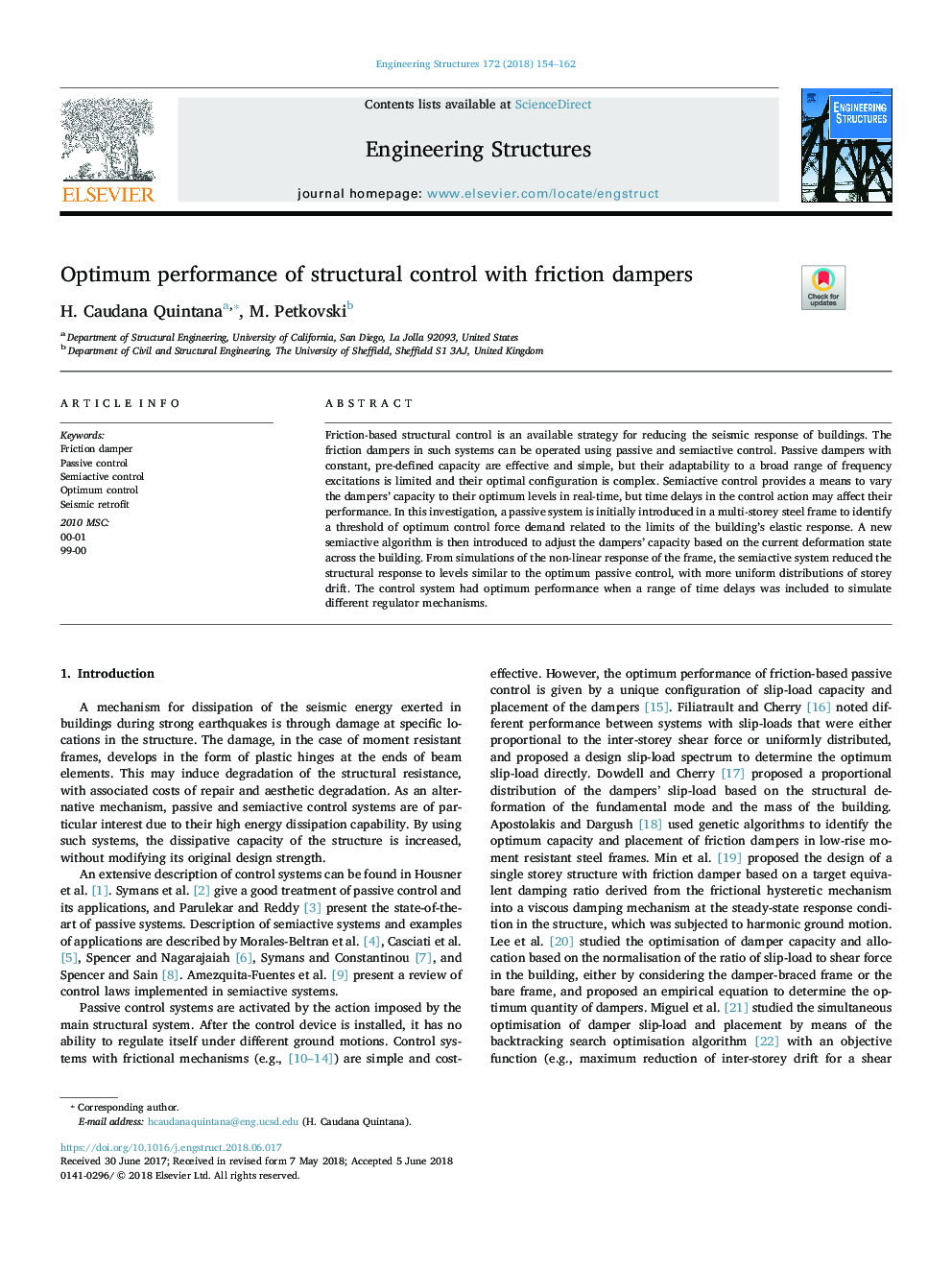| Article ID | Journal | Published Year | Pages | File Type |
|---|---|---|---|---|
| 6735919 | Engineering Structures | 2018 | 9 Pages |
Abstract
Friction-based structural control is an available strategy for reducing the seismic response of buildings. The friction dampers in such systems can be operated using passive and semiactive control. Passive dampers with constant, pre-defined capacity are effective and simple, but their adaptability to a broad range of frequency excitations is limited and their optimal configuration is complex. Semiactive control provides a means to vary the dampers' capacity to their optimum levels in real-time, but time delays in the control action may affect their performance. In this investigation, a passive system is initially introduced in a multi-storey steel frame to identify a threshold of optimum control force demand related to the limits of the building's elastic response. A new semiactive algorithm is then introduced to adjust the dampers' capacity based on the current deformation state across the building. From simulations of the non-linear response of the frame, the semiactive system reduced the structural response to levels similar to the optimum passive control, with more uniform distributions of storey drift. The control system had optimum performance when a range of time delays was included to simulate different regulator mechanisms.
Related Topics
Physical Sciences and Engineering
Earth and Planetary Sciences
Geotechnical Engineering and Engineering Geology
Authors
H. Caudana Quintana, M. Petkovski,
